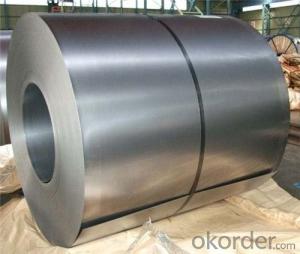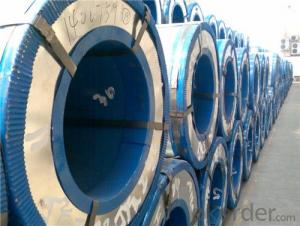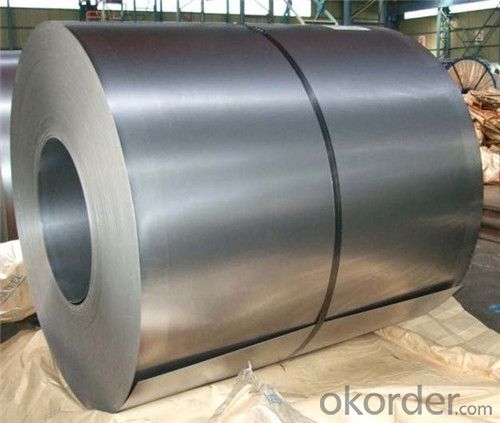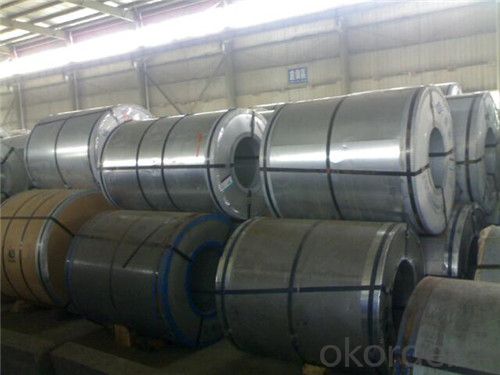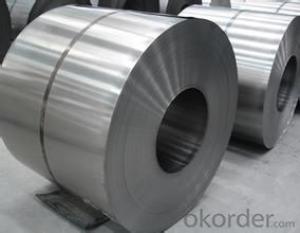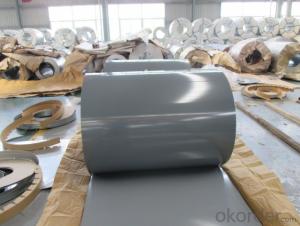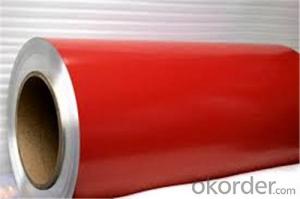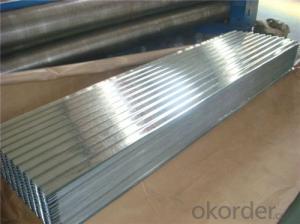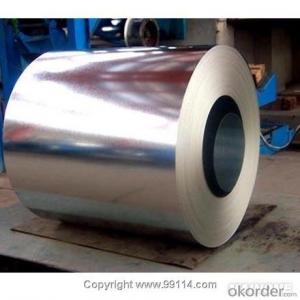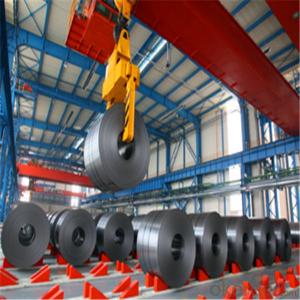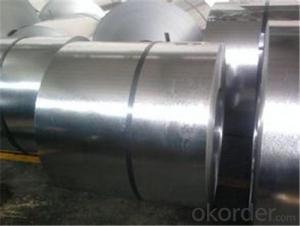cold rolled steel coil SPCC fngor roofing
- Loading Port:
- Shanghai
- Payment Terms:
- TT OR LC
- Min Order Qty:
- 36 m.t.
- Supply Capability:
- 30000 m.t./month
OKorder Service Pledge
OKorder Financial Service
You Might Also Like
cold rolled steel coil
Cold-rolled full hard coils will become batch annealing coil after relatively long time and complete recrystallization annealing in batch furnace and finishing. Such products has excellent plasticity, formability and suitable strength, can be wildly used in the field of next step treatment of punching and pressing forming and stretching, to make products like oil barrels, furniture, building materials.
Continuous annealed strip
Cold rolled full hard coils will become continuous annealed coil after recrystallization annealing and finishing in the continuous annealing line. Such products has mutually well-matched strength and plasticity, can be widely used in field of the next step treatment of cold forming, biting and non-punching, pressing and stretching forming, to make industrial cabinets, office furniture, building components and so on.
Specification (mm) | Batch annealed strip and coils | (0.2-2.0)*(600-1250) |
Continuous annealed strip and coils | (0.2-2.0)*(600-1250) | |
Grade | Q195-Q235/Q195L, SPHC/SPHD/SPHE/DX51D/DX52D/DX53D. | |
Executive standards | DIN, JIS, GB, enterprise standard | |
Edge condition | EC/EM | |
Surface treatment | Oiled/dry | |
Delivery format | Coils | |
Package type | Simple, Normal, Best | |
- Q: which one(glass or steel)has more power and velocity? im planning on using my slingshot for hunting.
- glass what
- Q: All of my friends say that if a car made of mostly carbon fiber would crash into a full steel car, or vice versa, the steel car would be DESTROYED and the carbon fiber would drive away, if not, easily repairable.
- At a reasonably high speed, both cars would be undrivable. That's by design, not due to the strength/weakness of the materials. The energy in an impact needs to go somewhere. Cars are designed so the body and the frame will bend and break, reducing the impact on the occupants. If the car is too rigid the chances of the occupants being injured increases. Carbon fiber composites do have a better strength to weight ratio than steel but they're also a lot less dense, so the same volume of material will have a similar strength. The primary benefit to carbon fiber is that for a part of the same strength the carbon fiber part will weigh less than the steel part.
- Q: What are the common methods of painting steel coils?
- The common methods of painting steel coils include coil coating, spray painting, and electrostatic painting.
- Q: What is the type of stainless steel used in knifes.
- If your talking about a folding pocket knife, I think that it's basically six one way and a half dozen the other. I actually do prefer stainless for my pocket knives. I don't want to oil a knife to the degree I feel carbon requires, only to then stick it my pocket to attract dirt to the knife and oil to my pants. I'm the exact opposite on sheath knives though. I like 1095 carbon steel, plain edge sheath knives. I'll thrash on them HARD, and I rarely have major edge problems. Of course, I require them to be coated with some kind of powder coat or the like, because they can rust, but I do try and keep them clean and dry when in the sheath, so they won't pit the uncoated edge. My reasons for this sheath knife preference is multi-fold. First, these knives are simply affordable. I don't spend $80 dollars on a outdoors sheath knife. I use the tool too hard to want to spend more. I don't like the more traditional stainless steels such as AUS-8, 420HC, and 440C (not to mention the HORRENDOUS 440A) because I feel that the all else being equal, a stainless blade will bend before a carbon blade will break. I also think that carbon holds an edge at least as well, if not better, than traditional stainless, and it's much easier to hone. I don't know much about these new laminates, other than the very hard, but not so tough. They seem to be POSSIBLY too brittle for my use. That, combined with the fact that they cost a FORTUNE, means that I just won't be considering them.
- Q: How are steel coils protected during transportation?
- Steel coils are typically protected during transportation by being wrapped in layers of protective materials such as plastic or paper, and then secured onto pallets or placed inside specialized containers. This helps prevent damage from moisture, dust, and other external elements, ensuring the coils arrive at their destination in good condition. Additionally, proper handling and loading techniques are employed to minimize the risk of any physical damage during transportation.
- Q: What are the common coil grades available for steel coils?
- There are several common coil grades available for steel coils, each with its own specific properties and applications. Some of the most commonly used coil grades include: 1. Hot Rolled Coils (HRC): This grade is produced by heating a slab of steel above its recrystallization temperature and then rolling it into a coil. HRC coils are known for their excellent weldability and formability, making them suitable for a wide range of applications such as construction, automotive manufacturing, and general engineering. 2. Cold Rolled Coils (CRC): These coils are produced by further processing hot rolled coils through cold reduction, which involves passing the steel through a series of rollers at room temperature. CRC coils have superior surface finish and dimensional accuracy, making them ideal for applications that require a smooth and uniform appearance, such as automotive body panels, appliances, and electrical equipment. 3. Galvanized Coils (GI): Galvanized steel coils are created by coating regular carbon steel coils with a layer of zinc through a hot-dip galvanizing process. This provides excellent corrosion resistance, making GI coils suitable for outdoor applications like roofing, fencing, and structural components. 4. Stainless Steel Coils: Stainless steel coils are manufactured from a variety of grades, with the most common being austenitic (such as 304 and 316) and ferritic (such as 430). Stainless steel coils offer excellent corrosion resistance, high temperature resistance, and aesthetic appeal, making them widely used in industries like food processing, chemical processing, and architecture. 5. Electro-galvanized Coils (EG): Electro-galvanized coils are similar to GI coils, but the zinc coating is applied using an electrolytic process instead of hot-dipping. EG coils have a thinner and smoother zinc layer, making them suitable for applications that require a brighter and more aesthetic appearance, such as automotive parts, appliances, and decorative items. These are just a few of the common coil grades available for steel coils. The selection of the appropriate grade depends on factors such as the intended application, required mechanical properties, and desired aesthetics. It is important to consult with steel suppliers or industry experts to determine the most suitable coil grade for a specific application.
- Q: What are the dimensions of steel coils used in the agricultural machinery industry?
- The dimensions of steel coils used in the agricultural machinery industry can vary depending on the specific application and requirements. However, common dimensions for steel coils used in this industry typically range from 0.5 to 2.0 millimeters in thickness and 600 to 1500 millimeters in width. These dimensions are suitable for various agricultural machinery components such as panels, frames, brackets, and reinforcements. It is important to note that these dimensions can be customized based on the specific needs of the machinery or the manufacturer's specifications.
- Q: what is the difference between metal and steel
- well, steel is a type of metal. It's sort of like asking the difference between a bug and an ant, an ant is a bug, but not every bug is an ant. Likewise, steel is metal, but not all metal is steel. Gold is metal, Silver is metal, Iron is metal, Steel is metal.
- Q: I have a job where I'm required to wear ANSI certified steel toed boots or shoes(so long as its ANSI). Thing is, I'm a vegan. I do NOT want to buy leather, and I will go to great lengths to buy a non leather shoe/boot I can wear on the job! I AM currently borrowing my dad's leather ANSI boots, but would very much love to be able to rock a pair of cruelty free boots/shoes on the job!It does not have to be certified vegan just all man-made materials and no leather/sued and other such stuff where animals have to die. It would make me no better than the massive slaughterhouse industries and such. Valueing money of ver live/morals. I don't want one of the first things I need to do in my manufacturing job is compromising my morals. :3So if you know of an ANSI vegan friendly boot brand PLEASE TELL ME! *gets on knees begging*Money isn't really an option for me, I'll just continue borrowing my dad's boots till I save up enough!Thanks in advance! :D
- This Site Might Help You. RE: Vegan ANSI Steel Toes? I have a job where I'm required to wear ANSI certified steel toed boots or shoes(so long as its ANSI). Thing is, I'm a vegan. I do NOT want to buy leather, and I will go to great lengths to buy a non leather shoe/boot I can wear on the job! I AM currently borrowing my dad's leather ANSI...
- Q: What are the common transportation defects in steel coils?
- Steel coils can experience various transportation defects. Improper handling or securing during transportation is a major cause of coil damage, resulting in dents, scratches, or tears in the steel. Coil edge damage is another issue that arises when the coils lack proper protection or rub against each other during transit, leading to deformation or breakage of the edges. Additionally, coil shifting occurs when the coils are inadequately secured or braced, causing them to move and shift during transportation, potentially causing misalignment or damage. Moreover, coil corrosion is a prevalent defect that arises when the coils are exposed to moisture or corrosive elements during transportation, leading to rust and deterioration of the steel. To prevent these common transportation defects in steel coils, it is essential to implement appropriate handling, securing, and protection measures.
Send your message to us
cold rolled steel coil SPCC fngor roofing
- Loading Port:
- Shanghai
- Payment Terms:
- TT OR LC
- Min Order Qty:
- 36 m.t.
- Supply Capability:
- 30000 m.t./month
OKorder Service Pledge
OKorder Financial Service
Similar products
Hot products
Hot Searches
Related keywords
